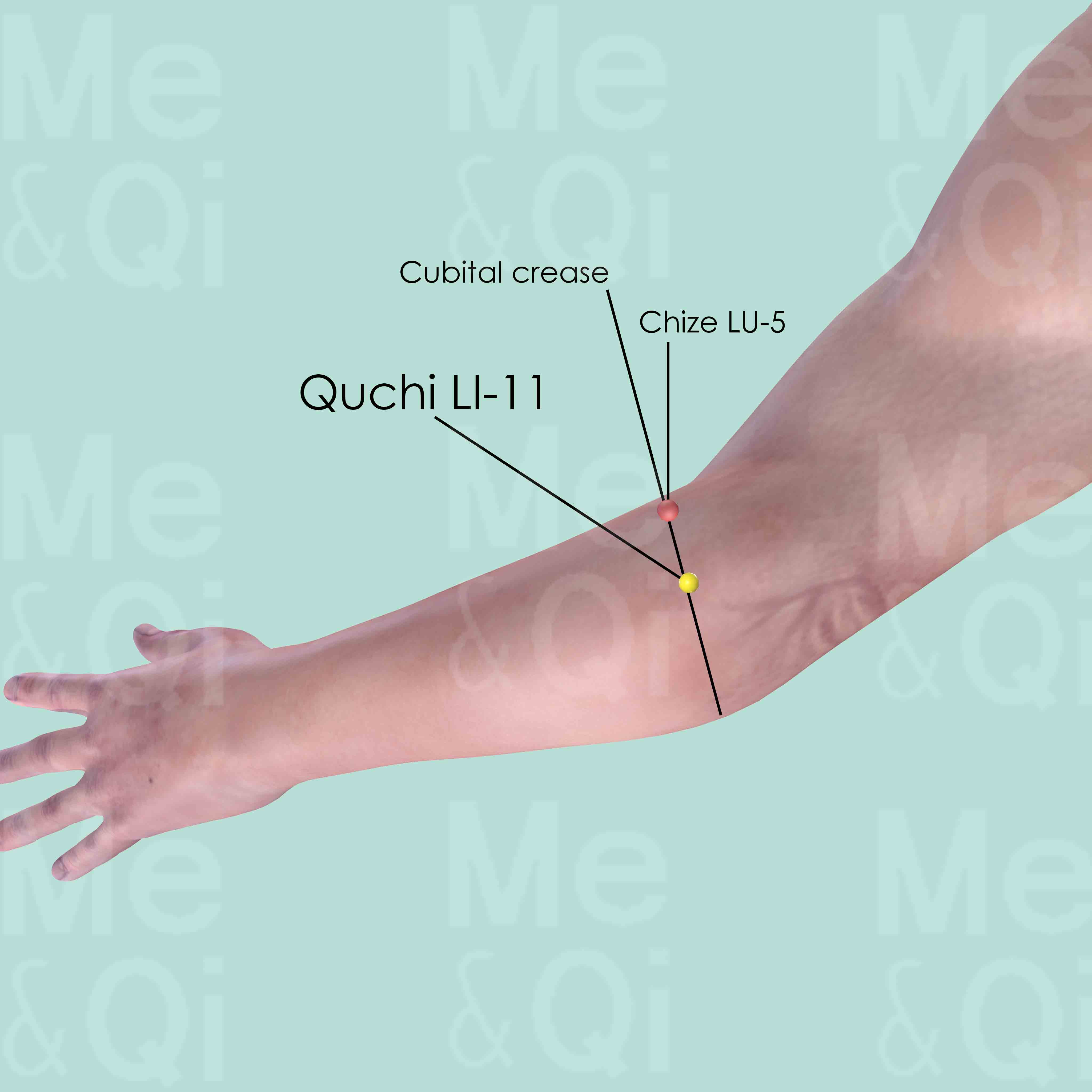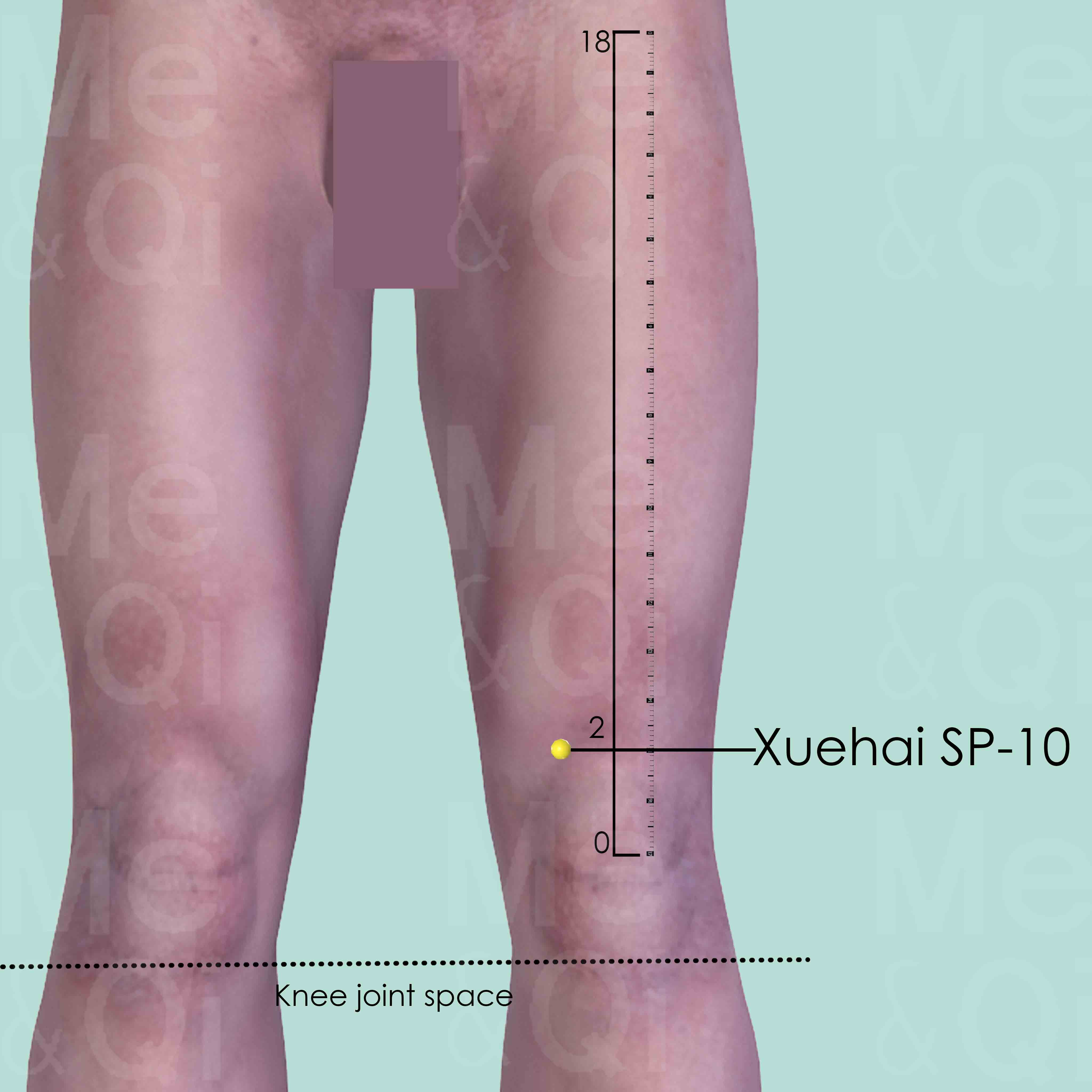Erysipelasaccording to TCM
Symptom family: Lumps, Swellings & Abscesses
Parent symptom: Skin Infection
What is Erysipelas?
Erysipelas is a distinct form of skin infection, traditionally known in Western medicine as St. Anthony's fire due to its fiery red appearance on the skin. Characterized by sharply defined, raised, and red areas on the skin, erysipelas typically affects the lower legs, face, or arms. This condition, marked by pain, swelling, warmth, and occasionally fever and chills, results from a bacterial invasion, often by streptococcus bacteria. Erysipelas distinguishes itself by its rapid spread and the severity of inflammation, making early recognition and treatment essential for effective management.
How Does TCM View Erysipelas?
Traditional Chinese Medicine (TCM) offers a holistic understanding of erysipelas, contrasting the pathogen-based view of Western medicine. In TCM, erysipelas is seen as the result of imbalances between the body's internal Qi (vital energy) and external pathogenic factors.
Key to TCM's approach is the concept of 'pattern differentiation'—the idea that symptoms like those of erysipelas arise when the body's harmonious balance is disturbed by factors such as Heat, Dampness, or Wind. Identifying the specific pattern of disharmony is critical in TCM, as it guides the choice of treatment to not only address the symptoms but also correct the underlying imbalance, aiming for a restoration of health at the most fundamental level.
Causes of erysipelas according to TCM
In Traditional Chinese Medicine, erysipelas is viewed through the lens of bodily imbalances and the invasion of external pathogens. The condition is often associated with the presence of Toxic-Heat, which refers to an accumulation of Heat and Toxins in the body that manifest as inflammation, redness, and swelling seen in erysipelas. This pattern is commonly treated with formulations designed to clear Heat and detoxify the body.
Another potential cause is Blood Stagnation, which in TCM terms, means the Blood flow is impeded, leading to the accumulation of Heat and Toxins in specific areas, contributing to the erysipelas' characteristic symptoms.
Wind-Cold invading the body can also be a factor, where the pathogenic influence of cold combined with wind leads to a blockage and subsequent heat as the body tries to fight off the invasion. Understanding these underlying patterns is crucial in TCM for the effective treatment of erysipelas, emphasizing the importance of a holistic approach to diagnosis and therapy.
TCM Herbal Formulas for Erysipelas
Treating erysipelas in Traditional Chinese Medicine focuses on the disharmony patterns causing the condition. For Wind-Cold patterns, Jiu Wei Qiang Huo Tang, with its key ingredient Notopterygium Roots (Qiang Huo), dispels Wind and Cold effectively. Blood Stagnation, contributing to the condition's severity, is addressed with Tao He Cheng Qi Tang, enriched with Peach Kernels (Tao Ren) to invigorate blood and resolve stagnation.
In cases of Toxic-Heat, characterized by intense inflammation and pus, Wu Wei Xiao Du Yin, featuring Honeysuckle flowers (Jin Yin Hua), cools the Blood and combats Heat. These targeted treatments aim to alleviate symptoms by resolving the underlying imbalances.
Explore below some TCM herbal formulas used to address erysipelas, organized by formula type.
- By Formula Type
- Formulas that clear wind-Cold
- Formulas that invigorate blood and dispel blood stagnation
- Formulas that clear external abscesses and sores
Formulas that clear Wind-Cold
Erysipelas can be treated by these formulas when it stems from external pathogenic influences characterized by cold and wind symptoms.
One such formula is Da Qing Long Tang, with ephedra as a key herb.
Other formulas of this category are listed in the table below.
All "formulas that clear wind-Cold" recommended for erysipelas
| Formula | Key herbs |
|---|---|
| Da Qing Long Tang | Ephedra (Ma Huang) |
| Jiu Wei Qiang Huo Tang | Notopterygium Roots (Qiang Huo) |
Formulas that invigorate Blood and dispel Blood Stagnation
Erysipelas can be treated by these formulas if it arises from poor blood circulation or stagnation of blood, which often manifests in pain or swelling.
One such formula is Tao He Cheng Qi Tang, with peach kernel as a key herb.
Formulas that clear external abscesses and sores
Erysipelas can be treated by formulas that clear external abscesses and sores if it is due to localized infections or inflammations on the skin.
One such formula is Wu Wei Xiao Du Yin, with honeysuckle flowers as a key herb.
Acupoints for Erysipelas
Acupuncture enhances the TCM approach to erysipelas, with acupoints chosen based on identified disharmonies. Quchi LI-11 is effective for clearing Heat and reducing swelling, beneficial in Toxic-Heat cases. Located at the elbow's lateral end, it helps disperse Wind-Cold and alleviate Heat.
For Blood Stagnation, Xuehai SP-10 above the knee invigorates blood circulation and reduces lumps, addressing stagnation. These acupoints, by targeting specific patterns, offer a tailored approach to erysipelas treatment, focusing on restoring balance and reducing symptoms through precise stimulation.
Explore below some acupoints used to address erysipelas, organized by meridian.
- By Meridian
- Large Intestine Channel
- Spleen Channel

Quchi LI-11
When the elbow is flexed, Quchi LI-11 is in the depression at the lateral end of the cubital crease, midway between Chize LU-5 and the lateral epicondyle of the humerus.

Xuehai SP-10
When knee is flexed, Xuehai SP-10 is 2 cun above the medial upper border of the patella, in a depression on the vastus medialis muscle.
TCM Herbs for Erysipelas
Explore below some TCM herbs used to address erysipelas, organized by herb category.
- By Herb Category
- Herbs that clear heat and relieve toxicity
- Herbs that invigorate the blood
- Herbs that cool the blood
- Warm/Acrid herbs that release the exterior
- Laxative herbs that drain downward
- Cool/Acrid herbs that release the exterior
- Purgative herbs that drain downward
Herbs that clear Heat and relieve Toxicity
Erysipelas can be treated by these herbs if it arises from internal heat and toxic accumulations, aiding in detoxification and cooling the body.
One such herb is Honeysuckle Flowers (Jin Yin Hua), a key herb in some formulas recommended for erysipelas, like Wu Wei Xiao Du Yin.
Other herbs of this category are listed in the table below.
"Herbs that clear Heat and relieve Toxicity" recommended for erysipelas
| Herb | Formulas they belong to (if applicable) |
|---|---|
| Honeysuckle Flowers (Jin Yin Hua) | Wu Wei Xiao Du Yin |
| Black Nightshade Herbs (Long Kui) | Not applicable |
| Forsythia Fruits (Lian Qiao) | Not applicable |
| Patrinia (Bai Jiang Cao) | Not applicable |
| Purslane (Ma Chi Xian) | Not applicable |
| Tokyo Violets (Zi Hua Di Ding) | Not applicable |
Herbs that invigorate the Blood
Erysipelas can be treated by these herbs when it stems from stagnation or poor circulation of blood, helping to improve blood flow and alleviate related discomfort.
One such herb is Peach Kernels (Tao Ren), a key herb in some formulas recommended for erysipelas, like Tao He Cheng Qi Tang.
Other herbs of this category are listed in the table below.
"Herbs that invigorate the Blood" recommended for erysipelas
| Herb | Formulas they belong to (if applicable) |
|---|---|
| Peach Kernels (Tao Ren) | Tao He Cheng Qi Tang |
| Scarab Grubs (Qi Cao) | Not applicable |
Herbs that cool the Blood
Erysipelas can be treated by these herbs when it is a consequence of excess heat in the blood, helping to cool and detoxify the blood.
One such herb is Woad Leaves (Da Qing Ye), which is directly recommended for erysipelas.
Other herbs of this category are listed in the table below.
"Herbs that cool the Blood" recommended for erysipelas
| Herb | Formulas they belong to (if applicable) |
|---|---|
| Woad Leaves (Da Qing Ye) | Not applicable |
| Woad Roots (Ban Lan Gen) | Not applicable |
Warm/Acrid herbs that release the Exterior
Erysipelas can be treated by these herbs when there is a need to dispel external cold and warm the body, especially in cases where there is insufficient Yang energy internally.
One such herb is Ephedra (Ma Huang), a key herb in some formulas recommended for erysipelas, like Da Qing Long Tang.
Other herbs of this category are listed in the table below.
"Warm/Acrid herbs that release the Exterior" recommended for erysipelas
| Herb | Formulas they belong to (if applicable) |
|---|---|
| Ephedra (Ma Huang) | Da Qing Long Tang |
| Notopterygium Roots (Qiang Huo) | Jiu Wei Qiang Huo Tang |
Laxative herbs that drain downward
Erysipelas can be treated by these herbs when there's a need for a milder form of bowel movement to alleviate constipation and regulate digestion.
One such herb is Flax Seeds (Ya Ma Zi), which is directly recommended for erysipelas.
Cool/Acrid herbs that release the Exterior
Erysipelas can be treated by these herbs when the body needs to harmonize with external environmental changes, particularly when there's a need to expel pathogenic factors like wind or cold without overly cooling the body.
One such herb is Greater Burdock Fruits (Niu Bang Zi), which is directly recommended for erysipelas.
Purgative herbs that drain downward
Erysipelas can be treated by these herbs in cases of severe constipation or internal heat, using strong downward movement to purge accumulation.
One such herb is Rhubarb (Da Huang), a key herb in some formulas recommended for erysipelas, like Tao He Cheng Qi Tang.
